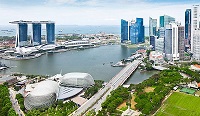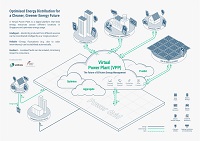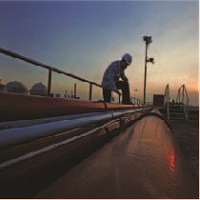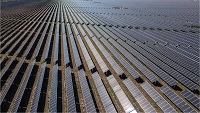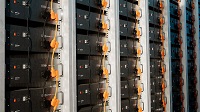For more information, please refer to:
Distinguished Guests,
Ladies and Gentlemen,
I am very pleased to join you at this World LNG series, Asia Pacific LNG Summit.
Gas and LNG – Fuel of the Future
These are exciting times for the energy, and in particular, the gas and LNG industry. As countries worldwide strive to decarbonise their energy mix, natural gas will be an important part of the solution. Compared to renewable energy sources like solar or biofuels, natural gas has higher power density (meaning that it generates a lot more power for a small amount of land) and relatively low cost. Compared to other hydrocarbons like oil and coal, natural gas produces lower carbon emissions and therefore results in very low air pollution
Not surprisingly, natural gas is now considered by many people to be the fuel of the future. Let me give a small illustration of the shift towards natural gas, and how oil companies are responding to this. In the past, when oil companies drilled for oil and found gas, their effort was deemed a failure. Gas was either re-injected, flared, or some form of alternative use had to be found for the gas. Today, the situation is completely different. Gas is high on the agenda for all the major oil companies. For example, seven of the eight Exxon-Mobil projects last year were for natural gas developments; Shell has said that half of its output will come from gas by 2012; and certainly the opening of vast “unconventional” gas reserves in the US has also sparked renewed interest. Some commentators have said that the ‘oil and gas’ industry, as it is commonly referred to, may soon become the ‘gas and oil’ industry.
Because gas resources are largely found in places far away from the key consumption centres, LNG is critical to the take-up of gas. LNG is already the fastest growing segment of the world’s hydrocarbon industry and this trend is likely to continue for some time, as LNG becomes an increasingly important part of the world’s energy mix.
Within the LNG market, a big part of the growth is coming from the Asia-Pacific region. The key producers are here: Qatar, and soon Australia, with major projects being developed in Queensland and the North-Western territories. And so are the major consumers. We have traditional buyers like Japan and South Korea; as well as rapidly growing markets in China and India, where demand for energy is growing at rapid pace, especially with the switch from coal and oil-fired plants to cleaner gas turbines.
Gas/LNG and the Singapore Economy
Singapore’s energy needs are small compared to our larger neighbours, but gas plays a major role in the powering of our economy. This wasn’t always the case. About a decade ago, 70 per cent of our electricity was generated by fuel oil using oil-fired steam plants. After we de-regulated the electricity market in 2001, the power companies in Singapore competed aggressively for more efficient ways of power generation. And when the first piped natural gas contract was signed with Indonesia in 2003, this sparked a dash for gas amongst the companies. Under the heat of market competition, all of our power generators switched to gas-fired plants, stranding their steam plants as this brought about a dramatic change in our fuel mix.
So today, 80 per cent of our electricity is generated by gas. This is from 70 per cent oil to 80 per cent gas, and it has contributed to a relatively low emissions profile from our power generation sector. With LNG, we will have even more gas generation capacity coming on-line. All five of our existing power companies in Singapore have announced plans for new plants. A new company, Island Power, has announced that it will be investing in Singapore and entering the Singapore power market. Altogether, based on the announced plans of these companies, we expect around 3000 MW or thereabout in gas generation capacity over the next 3 - 5 years. These are the announced plans of the companies, and I’m sure they will phase in their investments in line with demand. Some of this gas capacity will displace existing steam sets, so they will not increase our overall capacity, but will replace existing plants with more efficient plants. Some of these will be new additions to our overall generation capacity, so we do expect a healthy pipeline of gas generation capacity going forward, which will help to meet growing demand for electricity in Singapore. Our fuel mix will therefore continue to be dominated by gas, but it will be gas from diverse sources; piped gas, as well as LNG, providing us with clean, resilient, and sustainable supply of power for many years to come.
Besides relying on gas to power our economy, we are also positioning ourselves in Singapore to take full advantage of the global trends in the gas market, and create value across the entire chain of LNG activities. One area is in LNG trading. Singapore, as many of you are aware, is already one of the world’s leading commodity trading hubs. We have no oil here, but we are Asia’s top oil trading centre and the world’s largest oil trading market after London and New York. And we want to extend this competitive advantage to LNG trading.
In recent times, we have seen greater opportunities for LNG trading. LNG spot trades or short-term LNG contracts was insignificant 10 years ago. Today, it accounts for about 20 per cent of total LNG trade. LNG long-term contracts have become more flexible, for example in their destination clauses. And with more trading activity, there will be a need for a transparent price discovery mechanism amongst the industry. Singapore can provide an attractive platform for all this to happen. We already have companies like ConocoPhillips and Gazprom setting up their LNG trading offices and trading in Singapore. And we hope to attract and engage even more companies to develop, grow their LNG trading business from Singapore, and to enable new platforms for price discovery.
Another area is in LNG ship repairs and refurbishment. Singapore has excellent shipyard facilities. We have one of the most technically competent and efficient repair yards in the world for refitting of LNG carriers. Two of our local companies, Keppel and Sembawang, are world leaders for LNG repairs and refurbishments, and together command a significant share of the global LNG ship repair market. Sembawang Shipyard is the world’s leading LNG repair yard. They have a total of 75 ships repaired in the last 4 years, and they have clinched several long-term contracts with major LNG vessel owners and operators like Shell, BP, BG and China LNG Shipping recently. Sembawang is also embarking on life extension programmes for the older fleet of LNG carriers. Keppel has also carved a successful niche in the LNG business. They successfully delivered the first-ever conversion of an LNG carrier into an LNG Floating Storage and Regasification Unit (FSRU) in 2007. This year alone, Keppel has undertaken 8 LNG carrier refits and 1 FSRU conversion for companies like Shell, Golar, Tokyo LNG and Qatar Gas.
LNG Terminal in Singapore
We have LNG trading, LNG ship repairs and refurbishments, and I think to complete the picture, we need to talk about the LNG terminal which we are building in Singapore. The terminal will enhance the value proposition that Singapore can offer in the LNG business. The LNG terminal will offer vessel cool-down services so that vessels completing their maintenance in the shipyards, can be gassed up, brought down to operating temperature before arriving at their loading ports. The LNG terminal will offer storage and re-loading services – which will enhance our environment for trading activities, by allowing companies to store and subsequently re-export their LNG cargoes.
If you recall, the Senior Minister of State, Mr Iswaran, announced last year at this conference that EMA will be taking over the ownership and development of the LNG terminal in Singapore. Today, I am pleased to announce that we have made good progress with the LNG terminal. EMA has set up a subsidiary company, Singapore LNG Corporation (SLNG), to own and operate the terminal, and the project is proceeding on schedule. SLNG has completed piling for the first tank and they have already started piling for the second tank. The pipeline operator, SP PowerGas, is staying on top of the procurement and construction process for the connecting pipelines from the terminal to the gas network. Overall, we are on track for commissioning of the terminal in 2013.
The LNG terminal in Singapore will be located on a 40-hectare site in Jurong Island (south-western part of Singapore). It will have two 180,000 m3 tanks providing 3.5 mtpa of initial capacity in the first phase, but there will be provisions for further expansion. What we are building with these two tanks in the initial phase of the terminal construction will be sufficient for Singapore’s gas needs in the short-to-medium term, but as the LNG market is evolving rapidly, we also have to look ahead and plan for the future. And so SLNG is now developing a long-term Master Development Plan for the LNG Terminal. The intention of this plan is to give SLNG flexibility to configure and develop the terminal for future expansion to meet future needs. For example, the site that we have can potentially accommodate up to 4 or 5 more storage tanks with the appropriate regasification facilities. This means that the terminal itself, in the future, can potentially handle around 9 or more mtpa of LNG throughput for domestic consumption alone.
Beyond that, the terminal can also provide a range of different services, e.g., storage and sale of industrial gases like LPG, cold ‘energy’ integration and cooling services, LNG trucking or the use of LNG as bunkering fuel for ships in the future. All these are possibilities that we have mapped out and provided for in the master plan. It is not going to be possible to do all of these things at the same time. It is also too early to say which particular activity or services we will be focussing on. A lot will depend on how the LNG market evolves, and how the industry demand shapes up. But we are planning for these possibilities now, so that as the market changes, as new demand opens up, we will be well positioned to take full advantage of the opportunities in the market.
Conclusion
So to conclude, all of us in Singapore are excited about the future of the LNG industry. Step by step we are putting in place key components for a vibrant LNG eco-system in Singapore, whether through trading, ship repairs, refurbishment or the terminal itself. And over time, we will develop Singapore as an LNG hub, and a catalyst for LNG trading in the region.
Our ability to realise this will only be made possible through the participation of industry players like yourselves. All of you are connected to the market, to your customers, suppliers and partners, and we hope that through this conference, you will be able to share your insights on the latest trends in the LNG market, develop closer partnerships, and forge stronger alliances.
With that, I wish you all productive deliberations and a fruitful time in Singapore.
Thank you.
